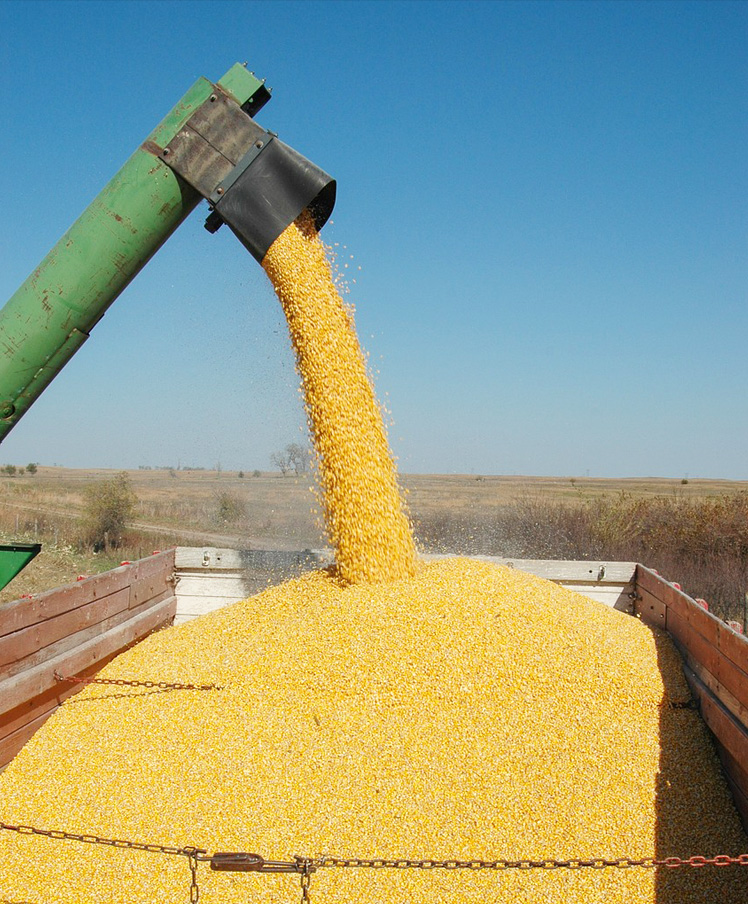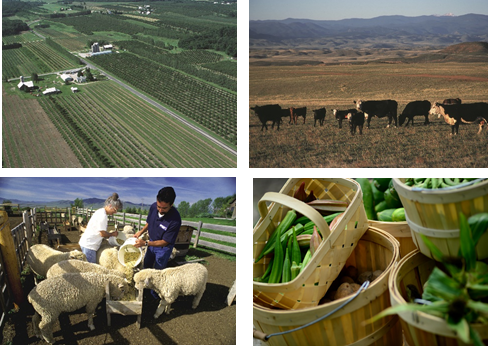Agriculture and Food Protection: Obstacles and Solutions
Agriculture and Food Protection: Obstacles and Solutions
Blog Article
Enhance Agricultural Performance With High-Quality Water Soluble Polymers
These polymers use a variety of benefits that can revolutionize typical farming techniques, from enhancing water retention and effectiveness to enhancing soil structure and nutrient delivery systems. By harnessing the power of cutting-edge polymer solutions, farmers can potentially open brand-new pathways in the direction of accomplishing higher plant returns while alleviating ecological influences.

Advantages of Water-Soluble Polymers
Water-soluble polymers supply a wide range of advantages in agricultural applications due to their enhanced water retention residential properties and capacity to enhance dirt framework. Agriculture. These polymers, when contributed to the dirt, can substantially enhance water holding capacity, lowering the regularity of irrigation needed by crops. By creating a gel-like compound when mixed with water, water-soluble polymers develop a tank that gradually launches dampness to plant roots, making sure a much more consistent water throughout droughts
In addition, these polymers help in stopping dirt erosion by binding soil bits together, consequently improving soil framework and stability. Improved soil framework enables far better root infiltration and oygenation, advertising much healthier plant growth and greater plant returns. Water-soluble polymers additionally help in nutrient retention by reducing leaching, guaranteeing that necessary nutrients continue to be offered to plants for a longer period.
Improved Water Retention and Performance
Enhancing farming water retention and performance with the consolidation of sophisticated polymer innovations has become a vital emphasis in modern-day farming practices. Water-soluble polymers play a critical role in enhancing dirt framework, boosting water seepage, and decreasing water dissipation prices. By forming a slim movie on the dirt surface area, these polymers assist to stop water runoff and enhance the dirt's water-holding ability, making sure that plants have accessibility to a sufficient water.
Furthermore, using premium water-soluble polymers can dramatically lower the regularity of watering, as they boost the dirt's ability to maintain dampness for longer durations. This not only saves water however additionally decreases the energy and labor expenses linked with watering methods. Additionally, boosted water retention and performance cause far better nutrient uptake by plants, bring about improved plant returns and general agricultural productivity.
Improved Nutrient Shipment Systems
Given the substantial effect of high-grade water-soluble polymers on boosting water retention and effectiveness in agriculture, the focus currently moves towards optimizing nutrient delivery systems to additionally improve plant development and yield. Improved nutrient delivery systems play a critical function in ensuring that plants get the needed nutrients in a form that is conveniently available for uptake, promoting their general health and productivity. By including water-soluble polymers into nutrient delivery systems, the performance of nutrient uptake by plants can be considerably improved.
One secret advantage of utilizing high-quality water-soluble polymers in nutrient distribution systems is their capability to control the launch of nutrients, ensuring a stable and regulated supply to plants over a prolonged period (Agriculture). This controlled launch mechanism aids stop nutrient leaching and runoff, therefore making best use of nutrition utilization click here for more by plants and reducing environmental impact

Soil Framework Optimization Techniques
Optimizing soil framework is vital in modern-day farming for taking full advantage of plant returns and advertising lasting land monitoring practices. Soil structure optimization methods play an important function in making sure that soil gives a suitable environment for plant development. One key method is the addition of organic issue, such as compost or manure, which helps enhance dirt structure by enhancing its water-holding capability and nutrient retention.
Moreover, exercising minimal tillage or no-till farming can prevent dirt compaction and promote the growth of a healthy soil structure. Cover chopping is an additional efficient strategy that involves planting plants specifically to boost the dirt and protect, preventing disintegration and enhancing dirt structure.
Furthermore, implementing plant turning methods can help break bug and condition cycles, while likewise improving dirt framework via the varying root structures of various crops. In general, utilizing these dirt framework optimization techniques can result in boosted farming productivity, decreased environmental effect, and lasting sustainability in farming methods.
Lasting Solutions for Plant Returns

To resolve the obstacles of making best use of crop returns while advertising lasting land monitoring practices, exploring lasting remedies becomes necessary in modern farming. Executing sustainable farming techniques is critical for guaranteeing lasting food security and environmental conservation. One sustainable option for enhancing plant yields is using accuracy farming methods. By leveraging technology such as GPS, sensors, and data analytics, farmers can enhance making use of sources like water, fertilizers, and pesticides, resulting in boosted performance and efficiency.
Furthermore, promoting crop rotation and cover cropping can help maintain soil wellness, decrease disintegration, and boost nutrient biking, inevitably adding to greater yields his response over time. Integrated pest administration methods also play a key duty in sustainable plant production by lessening the reliance on chemical pesticides and advertising natural insect control approaches.
Additionally, spending in study and technology for developing drought-resistant crop selections and climate-resilient farming methods can aid minimize the impact of environment adjustment on agriculture while making certain constant returns in the face of environmental obstacles. By taking on these lasting options, farmers can attain greater crop yields while safeguarding the wellness of the land for future generations.
Final Thought
In conclusion, Website the usage of top notch water-soluble polymers in agriculture supplies many benefits such as better water retention, improved nutrient delivery systems, and maximized soil structure. By applying sustainable remedies for crop yields, farmers can significantly raise farming efficiency and effectiveness. Agriculture. Water-soluble polymers provide a environmentally friendly and affordable method to improve the overall performance of farming techniques, resulting in far better outcomes for both farmers and the atmosphere
These polymers supply a range of benefits that can revolutionize conventional farming approaches, from improving water retention and effectiveness to maximizing soil structure and nutrient shipment systems.In addition, these polymers help in protecting against soil disintegration by binding soil particles with each other, thus boosting soil framework and stability. By developing a thin film on the dirt surface, these polymers help to stop water drainage and enhance the dirt's water-holding ability, making certain that plants have accessibility to an adequate water supply.
Dirt framework optimization techniques play a crucial role in making sure that dirt provides an optimal setting for plant development.In conclusion, the use of premium water-soluble polymers in farming supplies numerous benefits such as enhanced water retention, improved nutrient distribution systems, and enhanced dirt structure.
Report this page